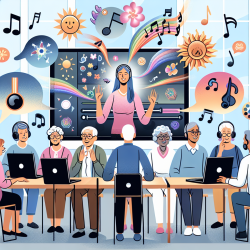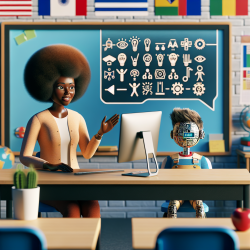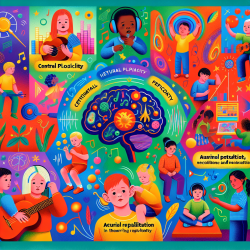As a practitioner in the field of online therapy, understanding the nuances of auditory-visual integration for speech perception in older adults can significantly enhance your therapeutic strategies. The research paper "The Integration of Auditory-Visual Information for Speech in Older Adults" by Kathleen M. Cienkowski and Arlene E. Carney provides invaluable insights that can be directly applied to improve your practice.
The study reveals that older adults, despite age-related sensory declines, are capable of integrating auditory and visual information for speech perception as effectively as younger adults. This finding is crucial for developing rehabilitation strategies that leverage both auditory and visual cues to enhance speech understanding in older adults.
Here are some practical ways to implement these insights into your therapy sessions:
- Utilize Visual Cues: Encourage the use of visual cues such as lip-reading and facial expressions during online therapy sessions. Visual information can significantly improve speech perception, especially when auditory signals are weak or unclear.
- Incorporate Multimodal Training: Design exercises that require clients to integrate both auditory and visual information. This can include tasks where clients watch videos and repeat what they hear, ensuring they pay attention to both the auditory and visual components.
- Selective Attention Tasks: Implement selective attention tasks similar to the Garner task used in the study. These tasks help clients practice focusing on relevant auditory or visual information while ignoring irrelevant stimuli, enhancing their overall perceptual integration skills.
- Monitor Reaction Times: Use reaction time measures to assess progress. Slower reaction times may indicate difficulties in integration, and tracking these times can help you tailor interventions more effectively.
- Individualized Approach: Recognize that sensory abilities vary among older adults. Tailor your strategies to each client's specific auditory and visual capabilities, ensuring that interventions are both effective and personalized.
Encouraging further research and staying updated with the latest findings can also be beneficial. Continuous learning will enable you to refine your techniques and provide the best possible care for your clients.
To read the original research paper, please follow this link: The Integration of Auditory-Visual Information for Speech in Older Adults.










